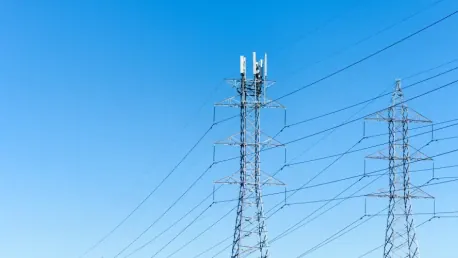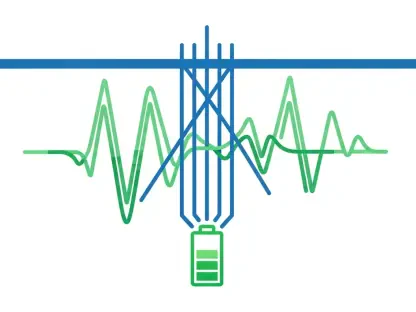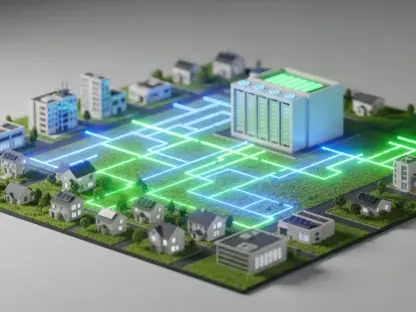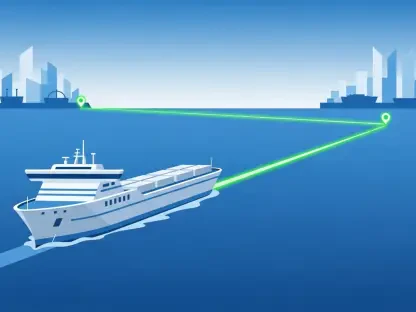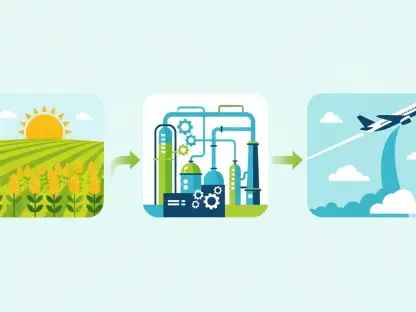The energy sector is undergoing a significant transformation, driven by increasing demand, aging infrastructure, and the growing impact of extreme weather events. As we look towards 2025, demand response emerges as a pivotal strategy to ensure a resilient and efficient energy grid. This article explores the key trends shaping the future of demand response and its potential to revolutionize the energy landscape.
Integration of Renewable Energy
Aligning Demand with Renewable Availability
Demand response plays a crucial role in integrating variable renewable energy sources like wind and solar into the grid. By allowing consumers to adjust their electricity usage in real-time, demand response aligns energy consumption with the availability of renewable resources. This adaptability is essential as the share of renewables in the energy mix continues to grow, contributing to the development of a “smart grid.” The dynamic nature of renewables often poses a challenge for grid operators, and demand response offers a real-time solution to these fluctuations. Enabling consumers to participate actively ensures that the grid can handle the erratic nature of renewable energy sources, thus promoting a more resilient and stable energy system.
The ability to adjust demand based on real-time conditions also helps optimize energy usage, reducing waste and maximizing efficiency. As technology continues to evolve, smart meters and other advanced tools can provide consumers with detailed information about their energy consumption patterns. This empowers them to make informed decisions about when and how to use electricity, aligning their demand with periods when renewable energy is most abundant. Consequently, this synergy between consumption and renewable generation not only supports a cleaner energy future but also fosters economic savings for both consumers and utility providers.
Enhancing Grid Flexibility
The integration of renewable energy sources introduces variability and unpredictability into the grid. Demand response enhances grid flexibility by providing a mechanism to balance supply and demand dynamically. This capability is vital for maintaining grid stability and ensuring a reliable energy supply, especially as the proportion of renewable energy increases. By leveraging demand response, grid operators can quickly respond to changes in renewable output, whether caused by weather conditions or other factors. This quick adaptability helps mitigate the risks associated with renewable energy’s intermittent nature and ensures that the power supply remains consistent and dependable.
Furthermore, the implementation of demand response programs supports the overall goal of a decentralized energy grid. Instead of relying solely on large centralized power plants, a more distributed approach with demand response allows for localized energy management. This decentralization enhances resilience against localized disruptions and improves the grid’s overall efficiency. By fostering a network of decentralized energy resources, demand response contributes to a more robust grid capable of handling various challenges, from increased renewable integration to unexpected demand surges.
Rising Load Growth
Impact of Data Centers and Crypto Mining
The U.S. grid is experiencing unprecedented load growth, driven by the expansion of data centers and crypto mining operations. Data centers create predictable, round-the-clock loads that challenge local utilities, while crypto mining introduces volatile, price-sensitive demand. These factors contribute to the increasing strain on the energy grid. The relentless growth of data centers, essential for supporting a myriad of digital services, and the energy-intensive nature of crypto mining make it imperative to manage these loads efficiently. Demand response programs serve as a valuable tool in mitigating the impact of these growing demands by encouraging users to shift their consumption patterns during peak periods.
Crypto mining, in particular, poses a unique challenge due to its price sensitivity and potential for sudden demand spikes. Demand response initiatives can offer incentives for crypto miners to modulate their operations based on grid conditions, helping to smooth out these fluctuations. By incentivizing flexible consumption, demand response can alleviate the pressure on local utilities and ensure a more balanced and reliable energy supply. This collaborative approach between consumers and grid operators is crucial for maintaining stability as the digital economy continues to expand.
Electrification of Transportation
The electrification of transportation, including the rise of electric vehicle (EV) home chargers and fleet electrification, adds a substantial and predictable load to the system. Demand response programs incentivize strategies like battery storage and smart charging technology to manage these diverse demands, helping alleviate grid pressure and ensuring a stable energy supply. As the adoption of EVs accelerates, it becomes increasingly important to integrate these new demands seamlessly into the existing grid infrastructure. Smart charging technologies, which can delay or shift charging times based on grid conditions, play a pivotal role in achieving this integration.
Additionally, large-scale fleet electrification presents both challenges and opportunities for the grid. Managed charging of EV fleets, especially during off-peak hours, can help distribute the load more evenly throughout the day. Battery storage solutions, often paired with renewable energy sources, also contribute to demand response by storing excess energy and releasing it during peak periods. These strategies not only support the grid in handling increased loads but also enhance the overall sustainability of the transportation sector by promoting the use of clean, renewable energy.
Data Access Challenges Hindering VPP Growth
Inconsistent Utility Data Standards
Virtual power plants (VPPs) have the potential to aggregate distributed energy resources (DERs) into a single, powerful grid asset. However, inconsistent utility data standards and administrative barriers impede their growth, particularly for small-scale resources like smart homes and EV chargers. These challenges hinder the full realization of VPPs’ potential. The lack of standardized data access across utilities makes it difficult for VPP operators to effectively monitor and manage diverse energy sources. This fragmentation stymies the ability to harness the collective power of distributed resources, reducing the overall efficiency and effectiveness of VPPs.
VPPs rely heavily on accurate, real-time data to optimize energy distribution and consumption. Without a uniform framework for data sharing and integration, it becomes nearly impossible to create a cohesive system that can respond effectively to grid conditions. Addressing these inconsistencies requires a concerted effort from utilities, regulators, and technology providers to develop and implement standardized data protocols. This would streamline the process of integrating DERs and facilitate the growth of VPPs, ultimately leading to a more resilient and responsive energy grid.
Efforts to Enhance Data Access
Organizations like Mission:data are working to establish standardized APIs to enhance data access. Improved data access would facilitate the integration and participation of numerous smaller energy sources in demand response programs, unlocking the full potential of VPPs and contributing to a more resilient and efficient energy grid. By promoting transparency and interoperability, these initiatives aim to eliminate the data silos that currently hinder the deployment of advanced energy solutions. Standardized APIs can bridge the gap between disparate systems, enabling seamless data exchange and coordination.
Enhanced data access also empowers consumers by providing them with detailed insights into their energy consumption patterns. This knowledge can drive more informed decision-making and encourage participation in demand response programs. Furthermore, it enables VPP operators to aggregate and optimize a diverse array of distributed resources effectively. By harnessing the collective power of these resources, VPPs can offer a flexible and scalable solution to grid management challenges, enhancing overall grid stability and sustainability.
Aging Infrastructure and Local Constraints
Bottlenecks in the Energy Grid
Much of the U.S. energy infrastructure was established in the 1970s and 1980s, creating bottlenecks that are increasingly visible as energy demands grow. This outdated infrastructure cannot keep pace with modern energy requirements, particularly in rapidly expanding urban areas and regions relying on distant power sources. The challenges posed by aging infrastructure are exacerbated by the growing complexity and demands of the contemporary energy landscape. As cities expand and new technological advancements emerge, the strain on the grid intensifies, highlighting the urgent need for modernization and adaptation.
The bottlenecks created by outdated infrastructure not only impede the efficient delivery of energy but also increase vulnerability to disruptions. Addressing these issues requires a multi-faceted approach that includes upgrading existing infrastructure, deploying new technologies, and embracing innovative energy management strategies like demand response. By prioritizing these efforts, policymakers and industry stakeholders can ensure that the energy grid remains robust and capable of meeting future demands.
Role of Demand Response and DERs
Demand response and distributed energy resources (DERs) provide localized, immediate solutions to mitigate the challenges posed by aging infrastructure. These resources reduce strain on the grid, enhance resilience, and offer flexible responses tailored to specific locations and times, ensuring a stable and reliable energy supply. Demand response allows for a more dynamic and responsive grid, capable of adjusting to fluctuations in demand and supply. It enables consumers to play an active role in grid management, offering load reductions or shifts during peak periods.
DERs, such as rooftop solar panels, battery storage systems, and microgrids, contribute to this flexibility by generating and storing energy close to the point of use. This localized approach reduces dependency on long-distance transmission lines and minimizes losses associated with energy transportation. By integrating DERs into the broader grid network, demand response programs can create a more resilient and efficient energy system. This synergy between demand response and DERs promotes a sustainable energy future while addressing the immediate constraints of aging infrastructure.
Impact of Severe Weather on the Grid
Rising Frequency of Extreme Weather Events
The rise in extreme weather events intensifies pressure on the grid, leading to potential power outages. Demand response contributes significantly by providing on-the-spot relief during such events, helping to maintain grid stability and prevent outages. As extreme weather becomes more frequent and severe, the need for adaptable and resilient grid management strategies becomes increasingly critical. Demand response offers a proactive solution by enabling rapid adjustments in energy consumption, thereby mitigating the risk of widespread blackouts and ensuring continuity of service.
In extreme weather scenarios, timely and coordinated responses are crucial for maintaining grid integrity. Demand response programs empower utilities and grid operators with the ability to call on a network of participants to reduce or shift their energy usage during critical periods. This collaborative effort helps to balance supply and demand, preventing overloads and maintaining stable operations. By leveraging demand response, the grid can better withstand the stresses imposed by extreme weather events, ensuring a more resilient and reliable energy system.
Case Study: California Heatwave
During a heatwave in California in September 2022, demand response played a critical role in preventing outages by enabling a significant reduction in energy consumption within minutes of an alert. This example highlights the importance of demand response in ensuring grid stability during extreme weather events and underscores the need for future market designs to value demand flexibility appropriately. The rapid mobilization of demand response resources during the heatwave helped to alleviate pressure on the grid, demonstrating the effectiveness of this approach in real-world scenarios.
The success of demand response during the California heatwave emphasizes the need for formal recognition and integration of demand flexibility into market frameworks. By valuing demand response appropriately, policymakers can incentivize broader participation and investment in these programs. This would enhance the grid’s ability to respond to extreme weather events and other emergencies, ensuring a more resilient and adaptable energy system. The lessons learned from such events can guide future efforts to optimize demand response strategies and strengthen grid resilience.
Evolving Capacity Accreditation Rules
New Regulatory Frameworks
As the energy mix evolves, regulatory frameworks must adapt to value different resources accurately. New capacity accreditation rules, which assess resources based on their potential availability during critical periods, are transforming the valuation of demand response. These rules aim to standardize the evaluation process and ensure that all resources are fairly assessed based on their contribution to grid reliability. However, the unique characteristics of demand response, such as its rapid response capability and emissions-free nature, require careful consideration in these regulatory frameworks.
The evolving regulatory landscape presents both opportunities and challenges for demand response. As capacity accreditation rules are updated to reflect the changing energy mix, it is essential to recognize the distinct advantages that demand response offers. By accurately valuing its contributions, policymakers can create an environment that encourages investment and participation in demand response programs. This will support the continued growth and development of demand response as a critical component of a resilient and sustainable energy grid.
Ensuring Fair Valuation of Demand Response
The energy sector is experiencing a major transformation driven by rising demand, outdated infrastructure, and the increasing effects of extreme weather events. Looking ahead to 2025, demand response stands out as a crucial strategy to ensure a resilient and efficient power grid. Demand response involves adjusting consumer power usage during peak periods to balance the load and avoid outages. This method is becoming increasingly vital as the traditional energy grid faces various challenges.
Technological advancements, such as smart grids and real-time data analytics, are enhancing the effectiveness of demand response programs. These innovations enable better prediction of energy demand and more efficient distribution of resources. Additionally, renewable energy sources like wind and solar power integrate seamlessly with demand response strategies, contributing to a more sustainable energy future.
This article examines the key trends and technological developments shaping the future of demand response. By understanding and implementing these strategies, we can revolutionize the energy landscape, making it more adaptable, sustainable, and resilient in facing future challenges.
